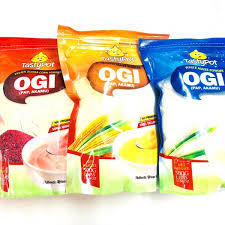How To Establish And Operate A Poultry Farm (Layers and Broilers) In Nigeria; The Feasibility Report

Until the late 1970’s when hydrocarbon was discovered in commercial quantity in Oloibiri, present day Bayelsa state, Agriculture remained the mainstay of the economy contributing over 90% of the Gross Domestic Product (GDP) of the country as against the less than forty percent (40%) it now contributes to the GDP of Nigeria with crop production accounting for an estimated eighty-five (85%), livestock ten percent (10%) and the balance made up by fisheries and forestry.
Though over seventy percent (70%) of Nigeria’s 923,768 square kilometres land mass is arable and suitable for Agricultural, the nation is a net importer of food products.
In an attempt to tackle the problems facing the Agricultural Sector in Nigeria, Government put in place the National Agricultural Policy, which was jointly formulated by the national stakeholders and International Development Partners and approved by the Federal Government in 2002.
Specifically, the National Agricultural Policy assigns supportive roles to the government, while investments in the sector are left to the private sector initiative and in order to encourage investment in the poultry sub-sector, Government approved ban on the importation frozen poultry products and gave other incentives to stimulate investment.
Nigeria, with a population of about one hundred and eighty million people (180,000,000) is grossly underprovided with the essential food component, which is protein. For example, data from the FOS, CBN, and FAO indicate that from cattle, less than two kilogrammes (2kg) of beef is available to an average Nigerian per year and just mere four kilogrammes (4kg) of eggs per annum is available to each Nigerian.
In fact, milk production has been nose diving or at best has remained constant since 1994.This scenario is compounded more so when the volume of egg supply is very low, being ten point fifty six grams (10.56 g) per person per day as compared with the usual recommendation that an egg should be consumed by an adult per day.
This recommendation would imply a crate of thirty (30) eggs per month. This story also holds for other meat products including, chicken.
The investor seeks to establish a poultry farm of one thousand (1,000)layers and one thousand (1,000) broilers.
This report seeks to examine the financial viability or otherwise of establishing a poultry farm. The size of the proposed farm is two (2) plots of land located in Ogun State. The farm is expected to start with one thousand (1,000) layers and one thousand (broilers) with a mortality rate of seven percent (7%).
The layers would be bred for the egg and meat. Purchased at day old chicks (DOC) from selected hatchery at N 250 / chick, it is expected that the layers would start laying eggs at twenty-two (22) weeks and later sold as spent layers after about (90) weeks and the laying period of sixty-eight (68) weeks.
It is expected that the layers would produce eggs at fifty percent (50%) of the production capacity (930 at 7% mortality rate) in the twenty-two (22) weeks to twenty-four (24) weeks and increase to seventy percent (70 %) in twenty-six (26) weeks – forty-eight (48) weeks. A further decrease to decrease from forty-eight (48) weeks to about sixty -five percent (65%) and sixty percent (60 %) at eighty (80) weeks is expected. The spent birds would be sold at the ninety week (90).
For broilers, purchased at day old chick (DOC) from selected hatchery at N 250 / chick, a well feed broiler (8 kg of feed) can reach an average life body weight of three point five kilogrammes (3.5 kg) between six to seven (6-7) weeks of age.
Table of Contents
EXECUTIVE SUMMARY 1.0 Business Overview 1.1 Description of the Business 1.2 Vision and Mission Statement 1.3 Business Objective 1.4 Critical Success Factor of the Business 1.5 Current Status of Business 1.6 Description of the Business Industry 1.7 Contribution to Local and National Economy 2. Marketing Plan 2.1 Description of product 2.2 The Opportunity 2.3 Pricing Strategy 2.4 Target Market 2.5 Distribution and Delivery Strategy 2.6 Promotional Strategy 2.7 Competition 3. Production Plan 3.1 Operational Details and Structure 3.2 Raw Materials 3.3 Machinery and equipment requirement 3.4 Description of the Location 3.5 Housing 3.6 Infrastructural Requirement 3.7 Production Process 3.8 Production Cost 3.9 Pre-Operating activities and expenses 3.9.1 Operating Activities and Expenses 3.10Project Implementation Schedule 4.0 Organizational and Management Plan 4.1 Ownership of the business 4.2 Profile of the promoters 4.3 Key Management Staff 4.3.2 Management Support Units 4.4 Details of salary schedule 5. Financial Plan 5.1 Financial Assumption 5.2 Start - Up Capital Estimation 5.3 Source of Capital 5.4 Security of Loan 5.5 Loan Repayment Plan 5.6 Profit and Loss Analysis 5.7 Cash flow Analysis 5.8 Viability Analysis 6.0 Business Risk and mitigation factor 6.1 Business Risks 6.2 SWOT Analysis
Project Specification:
Additional Info
Get this Report
Direct bank transfer
To order the report, Please do pay the sum of ₦30,000 into
Account Name : Foraminifera Market Research Ltd
Account Number : 274 20 569 37
Account Name : Foraminifera Market Research Ltd
Account Number : 101 76 603 95
Account Name : Foraminifera Ventures
Account Number : 011 66 066 32
Make your payment directly into our bank account. Please use your Order ID as the payment reference. Your order will not be shipped until the funds have cleared in our account.
Instructions
After payment call us on 01 -29 52 413 / 08033782777 or email us at foraminiferamarketresearch@yahoo.com with the payment details. After payment confirmation, the soft copy of the report would be sent to you within 24 hours.



